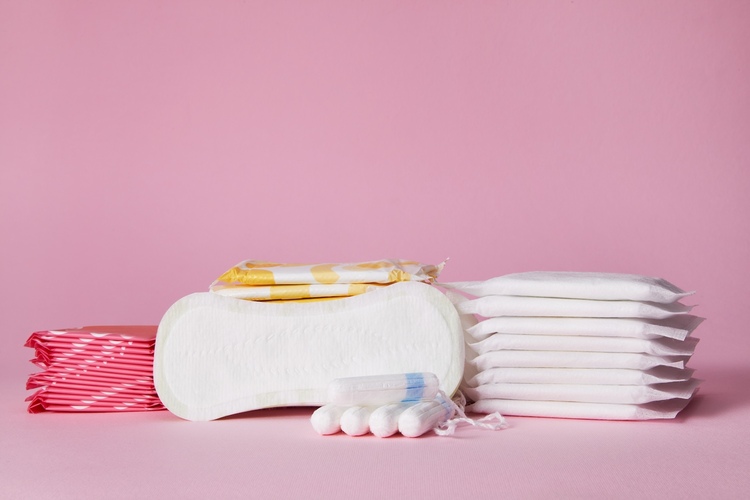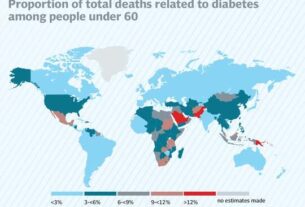In a groundbreaking move, California has taken a significant step to safeguard public health and protect the environment by banning the use of PFAS (Per- and Polyfluoroalkyl Substances) in period products. The new law, which passed in 2023 and goes into effect in 2025, is a pivotal victory for both environmental advocates and women’s health activists, addressing growing concerns over the long-term effects of harmful chemicals present in everyday hygiene items. This measure is part of a broader effort by the state to reduce exposure to toxic chemicals, particularly in consumer products used daily by millions of people.
This article delves into the background of PFAS, the implications of the ban, its potential impact on public health and the environment, and how it fits into the larger movement to regulate toxic chemicals in consumer goods.
Understanding PFAS and Their Dangers
PFAS, often referred to as “forever chemicals,” are a group of synthetic compounds used in a wide variety of products for their water- and stain-resistant properties. They have been in use since the 1940s and can be found in items such as non-stick cookware, food packaging, water-resistant clothing, firefighting foams, and personal care products, including tampons, menstrual pads, and other period products. The problem with PFAS is that they do not break down easily in the environment, and they accumulate over time in the human body, posing serious health risks.
Health Risks of PFAS Exposure
Research has shown that exposure to PFAS can lead to a range of health issues, including:
- Hormonal Disruption: PFAS have been linked to endocrine system interference, affecting hormone levels and reproductive health, which is particularly concerning when these chemicals are present in period products used by women during menstruation.
- Cancer Risk: Some PFAS compounds have been classified as potentially carcinogenic, increasing the risk of cancers, including kidney and testicular cancer.
- Immune System Impact: Studies suggest that PFAS can weaken the immune system, making individuals more susceptible to infections and potentially reducing the effectiveness of vaccines.
- Developmental Issues: Pregnant women exposed to PFAS may face risks such as preterm birth, low birth weight, and developmental issues in their children.
- Cholesterol and Liver Damage: Long-term exposure to PFAS has been associated with elevated cholesterol levels and liver damage.
Environmental Concerns
Aside from their impact on human health, PFAS pose a significant environmental threat. These chemicals are known to contaminate soil and water sources. Since they are highly resistant to degradation, PFAS accumulate in the environment, creating widespread contamination in drinking water, rivers, and oceans. Wildlife and ecosystems are equally at risk as these chemicals work their way through the food chain, affecting aquatic organisms, land animals, and ultimately humans.
California’s Legislative Move: Why the Ban on PFAS in Period Products?
California’s ban on PFAS in period products is part of the state’s broader legislative effort to combat the growing issue of PFAS contamination. In recent years, California has led the charge in regulating toxic chemicals, being one of the first states to pass strict legislation on chemical safety in consumer products. This latest measure, which is set to go into effect in 2025, specifically targets tampons, menstrual pads, and other period products that may contain PFAS.
Legislative Background
The bill, known as AB 652, was introduced by California Assemblymember Cristina Garcia, a long-time advocate for environmental and women’s health issues. The bill was designed to address concerns over the growing evidence of PFAS presence in feminine hygiene products, which are used by millions of women each month. This legislation requires manufacturers to remove PFAS from their products sold in California and label their products accordingly to ensure transparency.
Why Period Products?
Period products are an essential and intimate part of women’s lives, used regularly by millions of individuals around the world. The presence of harmful chemicals like PFAS in these products is alarming because of the sensitive nature of their use. Tampons, pads, and menstrual cups come into direct contact with the skin and, in the case of tampons, are used internally. Given the potential health risks associated with PFAS exposure, California’s decision to regulate these chemicals in period products marks a major step toward prioritizing women’s health.
Moreover, since menstruating individuals use these products for many years—an average of 40 years or more over the course of their lives—the cumulative exposure to PFAS is substantial. Over time, these chemicals may build up in the body, leading to long-term health complications. Banning PFAS from these products is a critical move to reduce the risk of chronic exposure to these harmful substances.
Industry Response and Challenges
The passing of the PFAS ban in California has stirred a mixed response from manufacturers and industry leaders. While some companies have already begun reformulating their products to exclude PFAS, others argue that the shift poses significant challenges in terms of cost and product performance.
Reformulation of Period Products
Several companies have proactively removed PFAS from their period products in response to growing consumer awareness and demand for safer alternatives. Brands like Seventh Generation and Cora already produce PFAS-free menstrual products, highlighting that it is possible to create effective, safe period products without the need for toxic chemicals. These companies have also emphasized the importance of transparency and are advocating for more stringent labeling requirements, which would help consumers make informed choices about the products they use.
On the other hand, some manufacturers have raised concerns about the cost implications of reformulating their products. PFAS are often used to make period products more absorbent and durable, and replacing them with safer alternatives may require significant investment in research and development. Despite this, the growing consumer demand for safer, more environmentally friendly products is driving innovation in the sector.
Consumer Awareness and Demand
The ban reflects an increasing shift in consumer priorities toward clean, non-toxic personal care products. As awareness of the harmful effects of PFAS and other toxic chemicals grows, many consumers are looking for products that are safe for both their bodies and the environment. Social media campaigns, advocacy groups, and non-profit organizations have played a critical role in educating the public on the dangers of PFAS, pushing brands to prioritize safety and transparency.
Consumers are not just demanding PFAS-free period products but are also calling for broader action to eliminate harmful chemicals from everyday items, ranging from food packaging to household cleaners. This shift represents a broader trend toward “clean beauty” and “clean personal care,” with many individuals opting for brands that prioritize sustainability and health.
Environmental Benefits of the Ban
In addition to the significant health benefits, California’s ban on PFAS in period products is a major victory for environmental advocates. Reducing PFAS in consumer products is expected to lead to less environmental contamination, particularly in water systems.
Reducing Water Pollution
PFAS contamination of water sources has become a pressing issue, not just in California but across the United States. These chemicals are known to seep into groundwater and surface water, affecting drinking water supplies for millions of people. By eliminating PFAS from period products, which are frequently disposed of in landfills or flushed down toilets, the state aims to reduce the amount of PFAS entering the waste stream and, subsequently, the environment.
This reduction is particularly important as wastewater treatment plants are often unable to effectively remove PFAS from water before it is released back into rivers and lakes. By addressing the source of PFAS pollution, California hopes to reduce contamination at its root, protecting both people and ecosystems from the harmful effects of these chemicals.
A Model for Other States and Countries
California’s move to ban PFAS in period products could have a ripple effect across the country and internationally. As one of the largest markets in the United States, California often sets the standard for regulatory practices that are adopted nationwide. Other states are likely to follow California’s lead in regulating PFAS in consumer products, especially as awareness of the dangers associated with these chemicals continues to grow.
Similarly, international markets are beginning to take note of the risks posed by PFAS, and many countries may look to California as a model for how to effectively regulate these substances in personal care products.
The Road Ahead
California’s ban on PFAS in period products marks a significant step toward reducing exposure to harmful chemicals and protecting public health. As this legislation goes into effect in 2025, it will likely set the stage for broader regulation of PFAS in other consumer products, encouraging safer manufacturing practices and more transparent labeling.
This move underscores the importance of continued advocacy for safer personal care products and a cleaner environment, as well as the need for increased research into the health impacts of toxic chemicals. For consumers, this ban is a victory that brings peace of mind, knowing that the products they use during their most intimate and personal moments are free from harmful, long-lasting chemicals.





